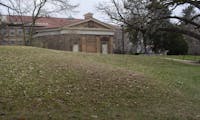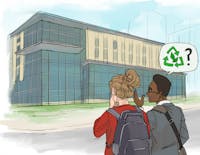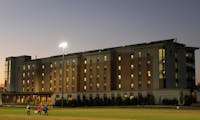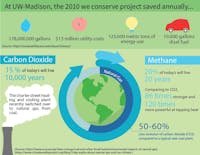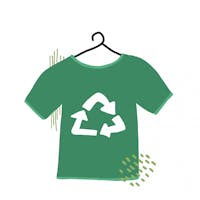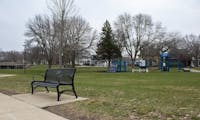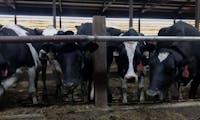News
Native land, history preserved on UW-Madison campus
Today, UW-Madison’s campus is known for the Mendota Terrace, Bascom Hill and the Lakeshore path. Preservation efforts focus on these prominent areas, but many don’t realize campus’ footprint is relatively new.
UW-Madison was built on Ho-Chunk land and the tribe’s cultural representation is still physically present on campus, despite contemporary changes to the land.
Evidence of human settlement on the land surrounding Waaksikhomik, meaning "where the man lies" (Lake Mendota) dates back 12,000 years. There are at least 28 habitation sites on the campus shoreline of Lake Mendota.
New student-lead program aims to increase equitable access to the outdoors
With students at the lead, Hoofer Ambassadors places equity and inclusivity at the center of the conversation about accessing the outdoors.
The newly-formed, student-led program, Hoofer Ambassadors, places equity and inclusivity at the center of the conversation about accessing the outdoors.
The program took shape over the spring semester, and is a product of efforts to bring more inclusion to Hoofers, UW-Madison’s outdoors club.
UW System use data, politics to integrate climate change in education
While UW System administration has no policy on teaching climate change, classes throughout the system utilize date and reference politics to encourage students to become environmentally-conscious.
UW System campuses serve up collaborative sustainable dining practices
Administration and students across many UW System institutions are eager to make dining sustainable through reusable to-go containers and campus-wide straw bans.
LEED-Certified: Are UW-System buildings getting greener?
LEED certification strives to make buildings greener based on silver, gold and platinum certifications — but are building standards becoming greener or just golder?
'We see it all:' Wisconsin rowers on the front line of Lake Mendota's algae blooms
When Rachel Illgen got off the water, the white shirt she wore to practice was stained green.
Madison Gas & Electric, shareholders fight over renewable energy proposals
With climate change impacts becoming more visible, environmentalists are turning to Madison Gas and Electric, the energy giant powering the city and its suburbs, in a bid to speed up its green energy initiatives.
Campus carbon footprint: A look into UW-Madison energy use
Both UW-Madison students and administration can play a part in reducing the campus carbon footprint.
The future of the environment is on your shoulders: the impact of the Fashion Industry
Clothing is both a necessity and a pollutant. However, there are ways to restructure your wardrobe in order to be more conscious of the earth, while staying fashionable.
Wisconsinites call for change: how legislators are answering
Wisconsin legislators consider new directions for state environmental policies following public calls for action.
Looking to the future: Young activists seek urgent climate reform
March’s Youth Climate Strikes served as just one example of the prevalent displays of youth climate activism around the world.
UW-Madison engineering community collaborates to combat climate change
Student organizations and faculty researchers work together to engineer solutions to make campus more environmentally friendly.
Park conservation, green agendas take priority in new Madison politics
Newly-elected alder Grant Foster has big ideas for sustainability and conservation in Madison’s parks, embodied in the idea that “access is at the top of the list.”
The Legacy of Environmental Injustice in Madison
Madison is segregated not only by race and income, but by levels of environmental risk.
What WI can do: the impact of cattle on greenhouse gas emissions
Researchers at UW-Madison, like many across the globe, find that dairy cattle methane emissions add to the overall negative impact of greenhouse gases on the atmosphere.
K-12 students call for climate action, teachers take lessons outside
Although students’ local environments are different, being a part of the Earth’s ecological system is something that every student shares. No matter where a student attends school — be it northwest or southeast Wisconsin — all students inevitably interact with their surrounding environment everyday.
